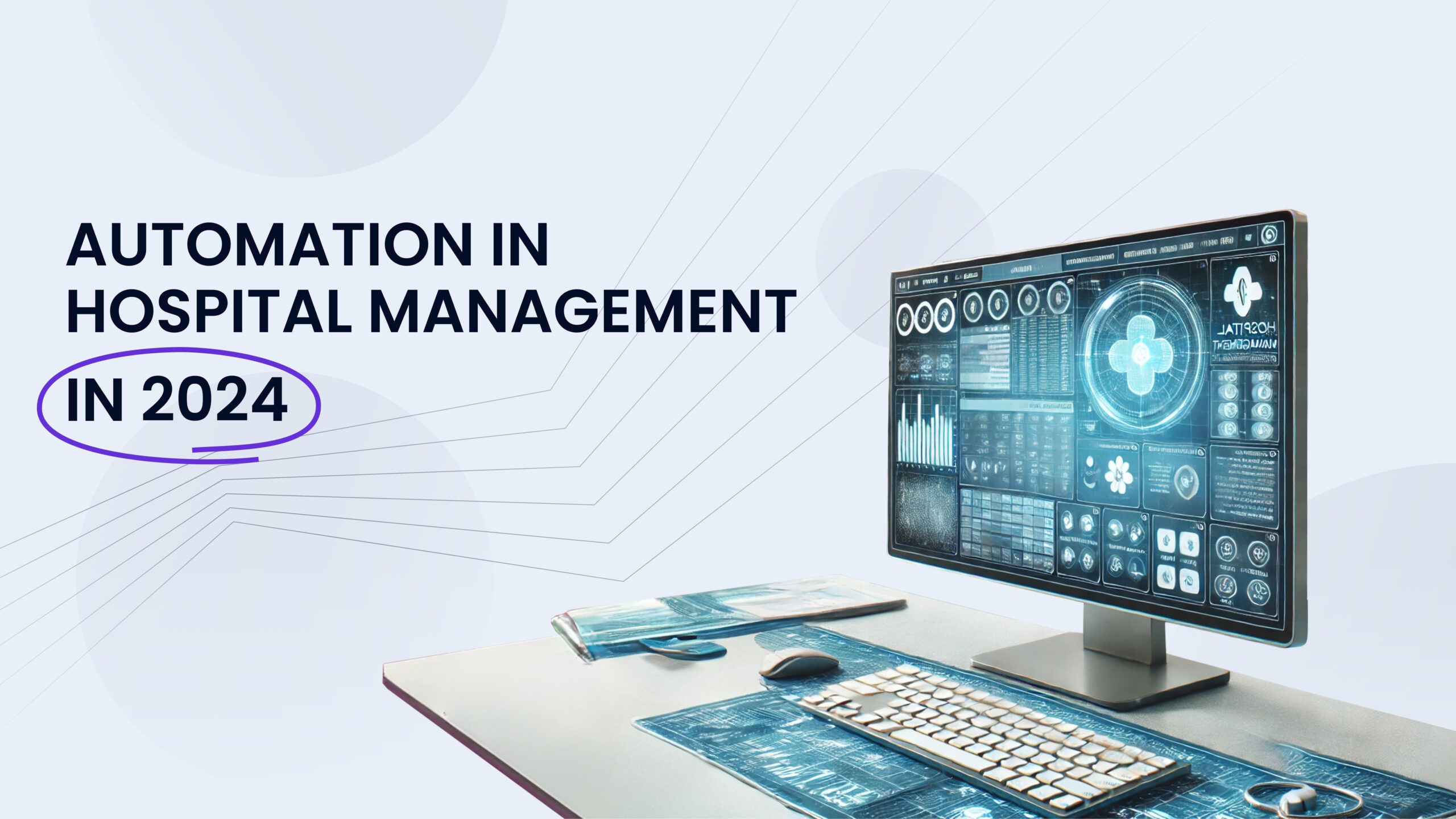
Why automation in hospital management is so important in 2024? First of all, the projected life expectancy is 73,7 years in 2024, although it was only 64 in 1990. The population is getting older. In a decade, there will be more people needing medical support and fewer working-age employees to provide it. Hospital software can fill this gap, and fortunately, it’s automation is already happening.
Content:
- Healthcare systems challenges in 2024
- Areas of automation in hospitals
- Technology implementation in hospitals
- How will smart hospitals improve the consumer experience?
- Benefits and challenges of hospital management automation
- How to create different hospital software?
- The future of automation in hospitals
- How can staff augmentation help you with your medical startup?
Healthcare systems challenges in 2024
The Future Health Index 2024 paints a concerning picture: healthcare systems are buckling under pressure from workforce shortages, financial burdens, and ever-growing demand. This combination limits their ability to deliver high-quality care to patients exactly when and where it’s needed.
Staff shortages are straining healthcare systems globally, impacting both healthcare personnel and patients. Here’s a closer look at what healthcare leaders are observing:
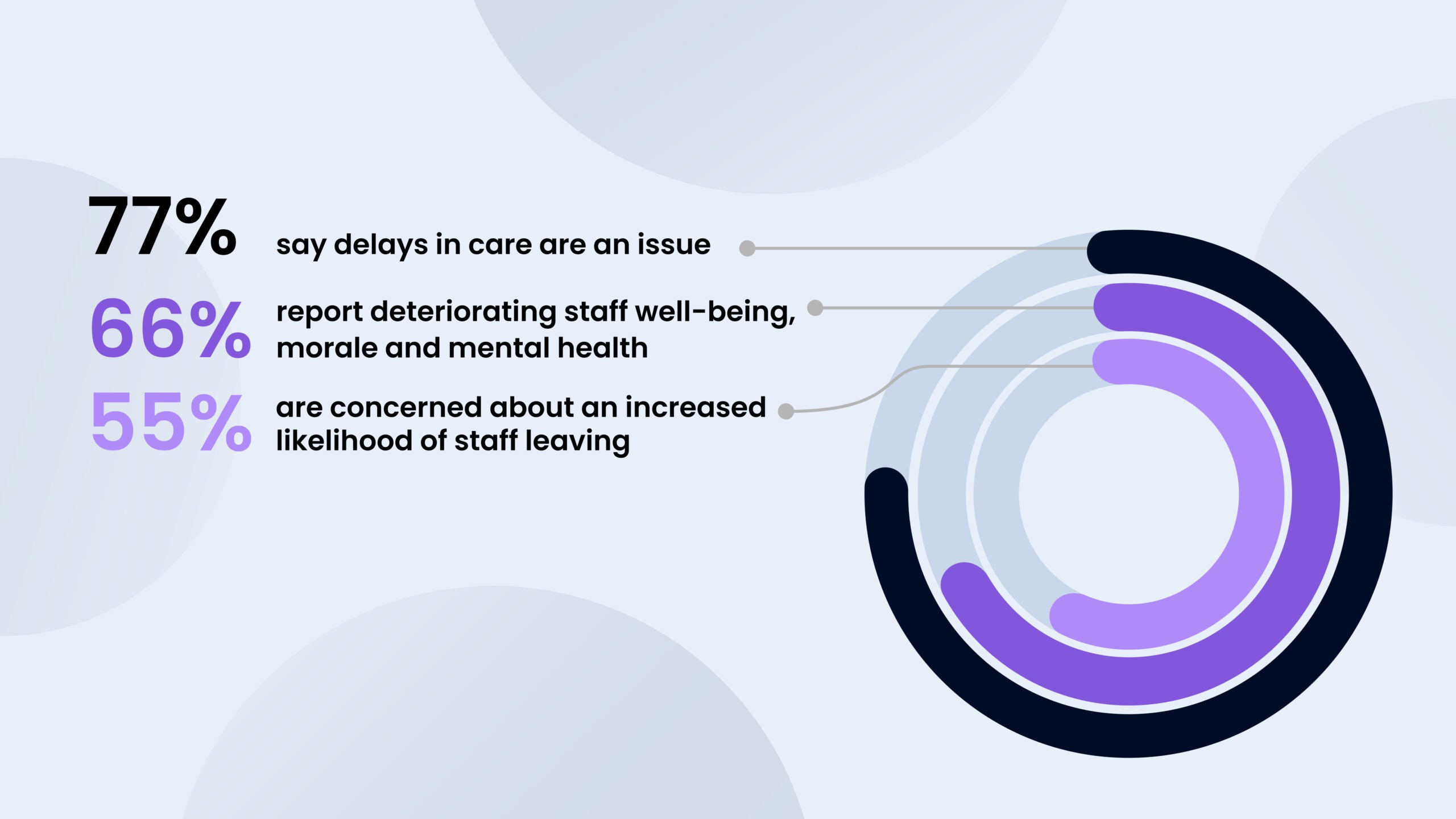
Healthcare workers are burning out. A Philips survey reveals that 66% of healthcare facility leaders see increased burnout, stress, and staff questioning their careers. The relentless workload is causing a staffing crisis, with 55% of leaders fearing staff departures. To address this, 37% believe external partnerships like university collaborations and staff development programs are crucial.
Rising healthcare costs continue to be a major concern as well. Integrating technologies is one of the ways to reduce them. However, balancing the promise of new healthcare technologies with their practical implementation is tricky, while integrating them effectively without overwhelming staff or compromising patient can be a challenge.
Areas of automation in hospitals
Healthcare leaders (92%) see automation as key to combating staff shortages by freeing professionals from repetitive tasks. They believe it will save time and allow them to focus on core skills. However, 65% of leaders also face staff skepticism about automation, with concerns about quality assurance and losing essential skills. Leaders emphasize the need for proper research and ongoing staff development to ensure automation complements, not replaces, human expertise.
Healthcare leaders are turning to automation to free up valuable time for both staff and patients. Currently, the focus is on reducing administrative tasks for clinicians and streamlining patient services like appointment scheduling. Looking ahead, workflow prioritization is seen as the biggest automation opportunity. This could involve automated triage systems (assisting emergency room staff by prioritizing cases based on urgency) and smart image screening (prioritizing medical images and delegating them to the most suitable radiologist).
Beyond workflow, automation is poised to impact equipment maintenance and monitoring. By predicting potential repairs, hospitals can prevent costly downtime and ensure uninterrupted patient care. Finally, automating manual notetaking is a growing ambition, allowing clinicians to dedicate more time to patients and less to documentation.
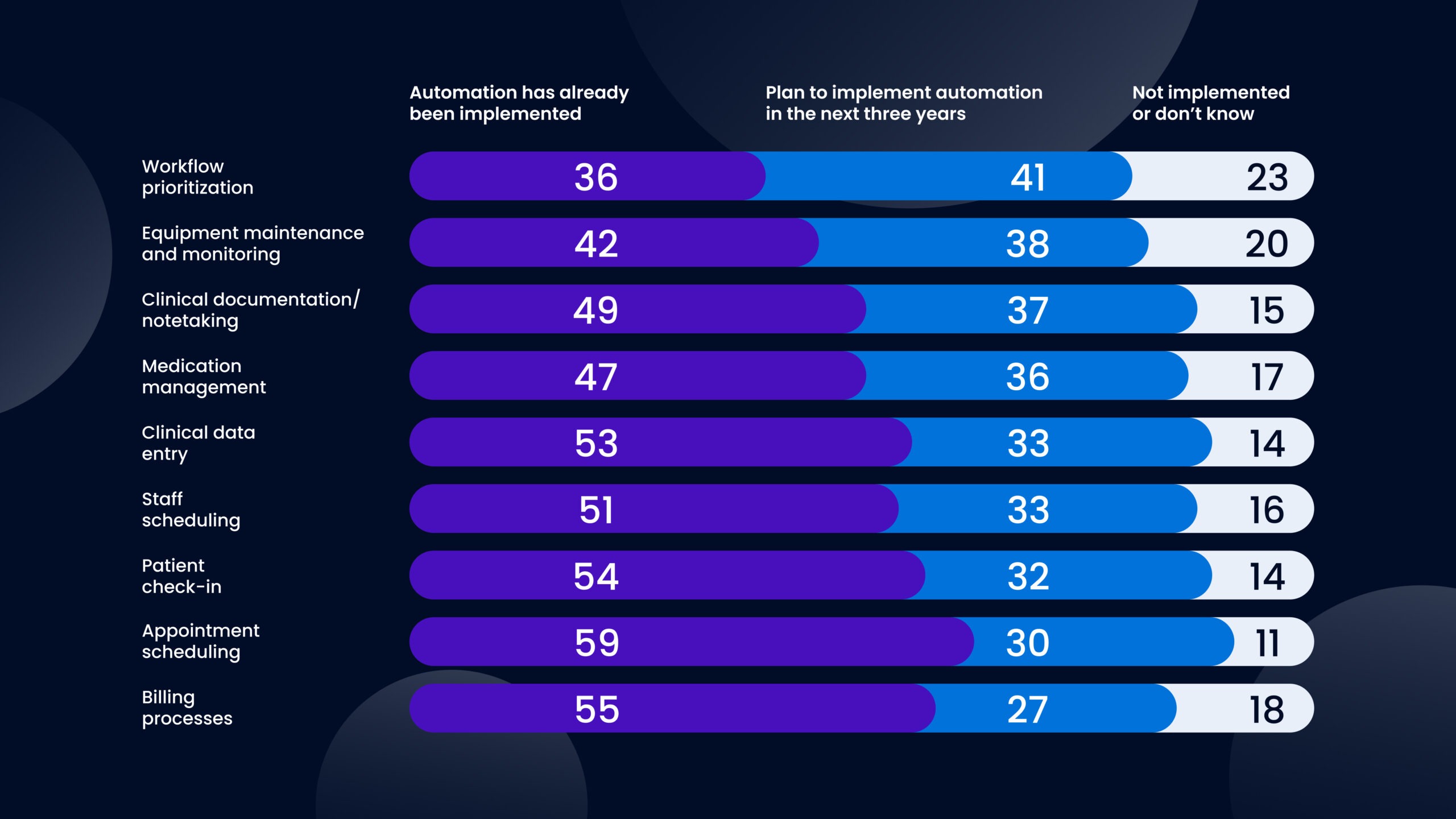
Technology implementation in hospitals
What software do hospitals use to automate their core functions? Here’s a short breakdown with examples.
Administrative tasks
For automating administrative tasks, robotic process automation (RPA) bots are widely used. Powered by ML and AI, they mimic human actions, automating repetitive tasks like appointment scheduling, insurance pre-authorization, and claims processing.
RPA utilizes software bots to interact with existing hospital systems, following pre-defined rules to automate tasks. It can navigate user interfaces, extract data, and perform actions like filling out forms or triggering workflows.
Inventory management
Automated inventory management systems utilize IoT sensors, barcodes, and RFID tags to track supplies in real time. Machine learning algorithms predict stock needs and automate reordering.
Sensors and tags track the location and quantity of supplies. Data is fed into an inventory management system that uses algorithms to analyze usage patterns and automatically trigger reorders when stock levels reach a predefined threshold. Integration with supplier systems enables automated replenishment.
Medical records management
Electronic health records (EHR) systems are the best-known and most widely used automated hospital management systems. They store patient data electronically, enabling secure access and sharing amongst authorized personnel.
Natural language processing utilizes machine learning algorithms to analyze unstructured text data in clinical notes, automatically extracting diagnoses, medications, and allergies. This allows for faster retrieval of relevant information and improves data accuracy.
Laboratory testing and analysis
Automated laboratory systems utilize robots and machine learning to perform repetitive tasks like sample preparation, analysis, and result generation.
This technology applies robotic arms to handle samples and perform tests with minimal human intervention. Integrated software analyzes test results and generates reports. ML algorithms are increasingly used to identify patterns and anomalies in test data, potentially leading to earlier diagnoses.
Remote patient monitoring
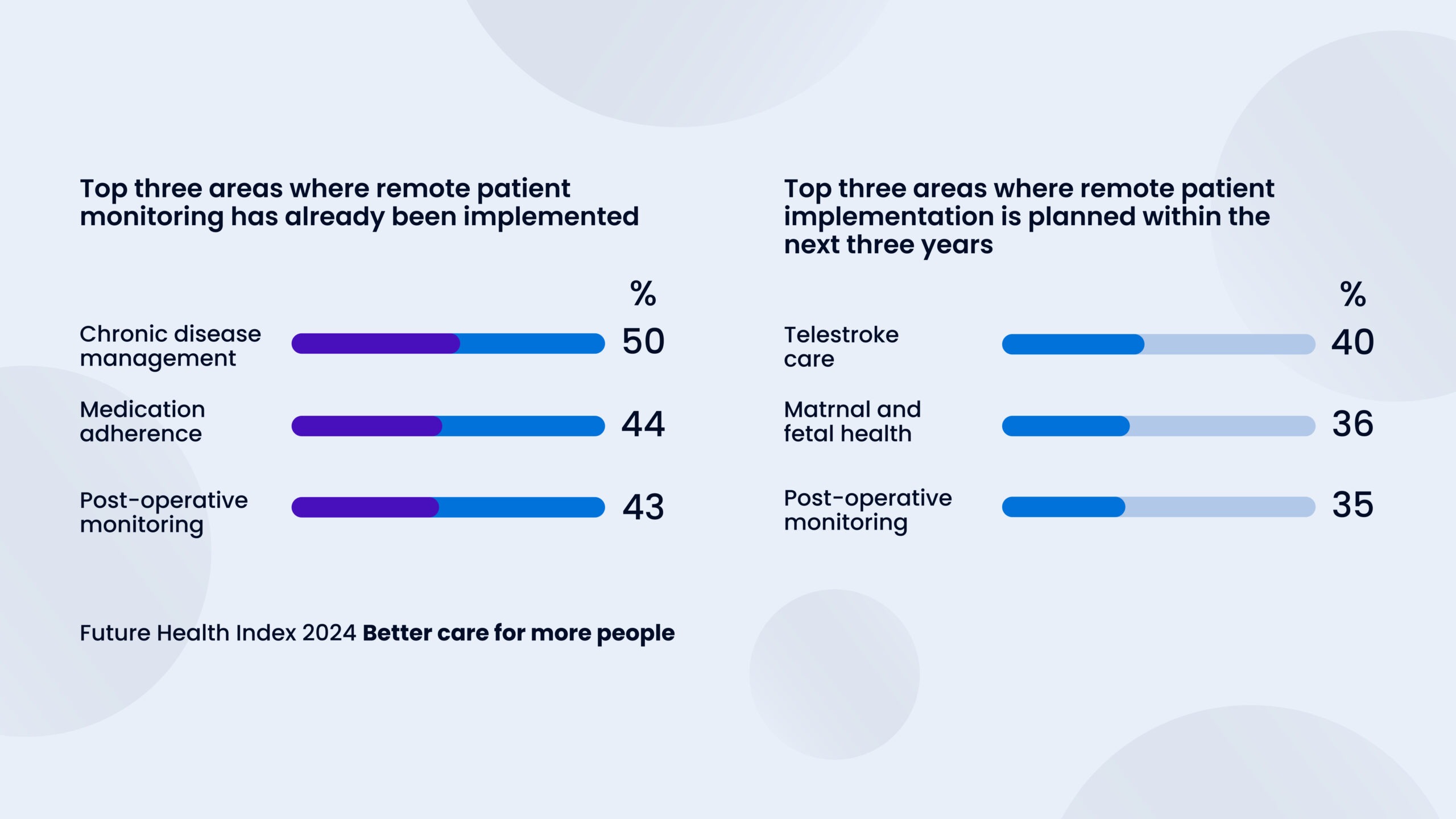
Wearable devices and sensors collect patient vitals like heart rate, blood pressure, and blood sugar. Telehealth platforms enable remote consultation and intervention by healthcare professionals.
How exactly does it work? Wearables transmit data wirelessly to a secure platform. Clinicians can monitor patient data remotely, identify potential health concerns, and schedule virtual consultations. Alerts can be triggered if vital signs fall outside pre-set thresholds, prompting a timely response.
Our dedicated team helped create this kind of software for one of our clients, NiCas CS. Our team focused on developing a complete technological system that allows for noninvasive assessment and monitoring of different health parameters. This system eliminates the need for procedures that might cause discomfort to the patient.
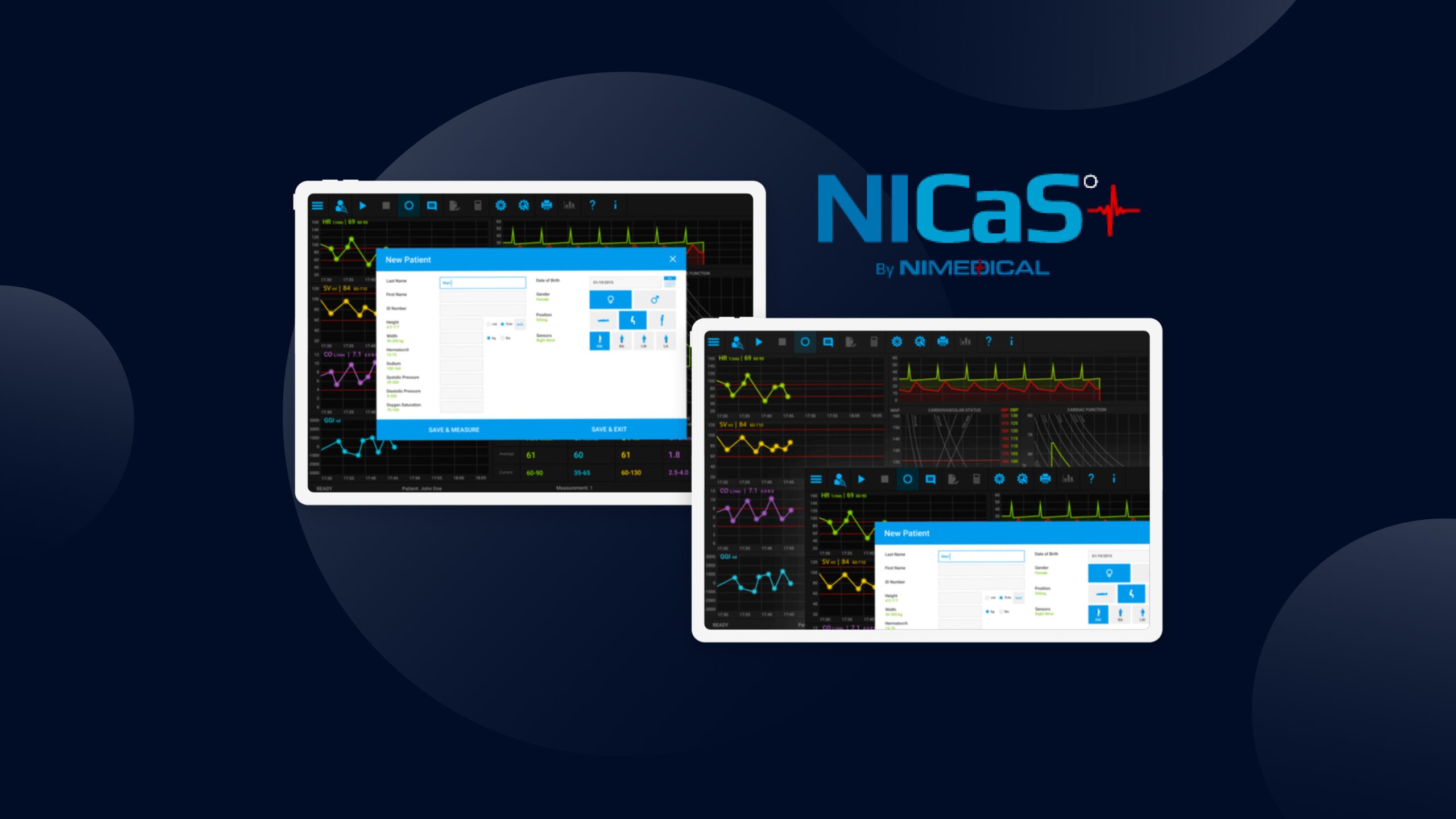
How will smart hospitals improve the consumer experience?
According to Statista, the global smart hospital market was valued at $35.9 billion in 2021 and is projected to grow exponentially, reaching an estimated $83 billion by 2026. This significant increase highlights the rapid adoption of smart hospital technologies.
Smart hospitals are transforming healthcare delivery, making it more efficient, convenient, and comfortable for patients. This user-centered approach addresses the growing demand for a better healthcare experience.
Here’s how smart hospitals will benefit patients:
- Easier access to information. Patients will have better access to their health data and digital tools to manage their care.
- Improved communication. Telemedicine and remote monitoring will allow for more convenient consultations and check-ins.
- Increased transparency. Smart hospitals aim to provide clear information about costs, wait times, and doctor performance.
- Enhanced comfort. Efficient workflows and well-designed spaces can reduce patient stress and anxiety.
The growing market for smart hospital technologies reflects this shift towards a more patient-centric healthcare system. This includes the rising adoption of electronic health records (EHRs) for improved data management and telehealth solutions for remote care.
EHRs are a cornerstone of smart hospitals, improving both healthcare delivery and patient engagement. A 2020 survey revealed widespread adoption in Europe, with over 80% of clinicians using EHRs, and near-universal adoption in countries like the Netherlands and Denmark.
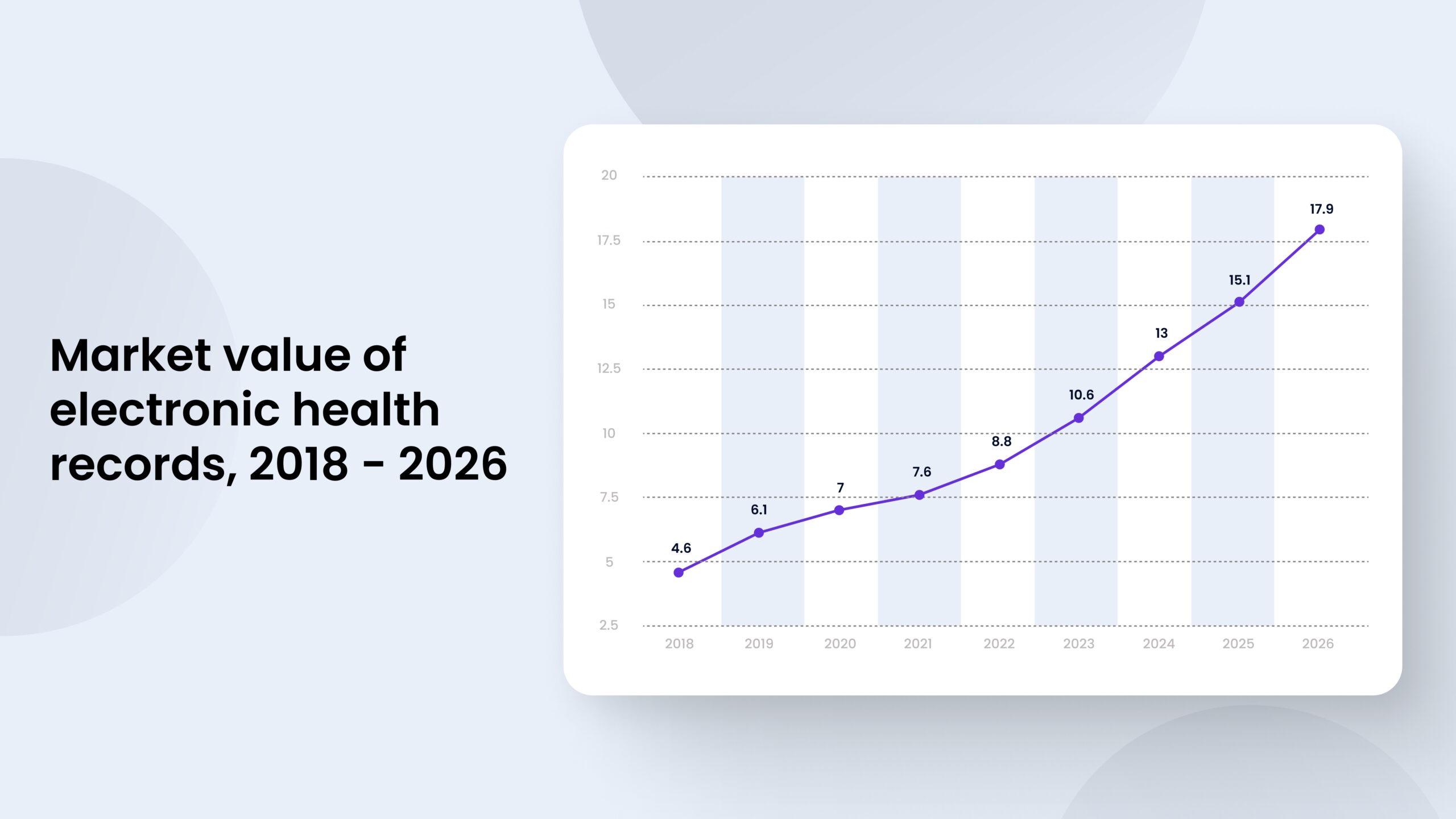
However, EHRs also raise data privacy concerns. Since they contain sensitive information shared across healthcare settings, robust access controls, legal frameworks, and standardized training are crucial to ensure confidentiality. By addressing these issues, we can unlock the full potential of EHRs in smart hospitals.
Benefits and challenges of hospital management automation
| Benefits of automation | Challenges of automation |
|---|---|
| Increased efficiency. Hospital softwares can streamline repetitive tasks like scheduling appointments, processing claims, and generating reports. | High initial investment. Implementing automation solutions can be expensive, requiring investment in hardware, software, and training. |
| Improved accuracy. Automation can reduce human error in data entry and other tasks, leading to more accurate medical records and better decision-making. | Data security concerns. Automating healthcare systems raises concerns about data security and patient privacy. Robust security measures are crucial. |
| Enhanced patient care. Faster workflows and reduced staff workloads can improve the quality of care and shorten patient wait times. | Workforce resistance. Statistics show that many staff members resist automation due to concerns about job security or the fear of being replaced by machines. |
| Cost reduction. Automation can help hospitals save money by reducing administrative costs, optimizing inventory management, and minimizing equipment downtime. | Technical challenges. Integrating different automated systems with existing hospital infrastructure is complex and requires ongoing technical support. |
| Better resource allocation. Automation can provide real-time data and analytics to help hospitals make better resource allocation decisions. | Limited scope. Not all hospital tasks are suitable for automation. Complex decision-making and tasks requiring human empathy still need skilled professionals. |
| Improved staff satisfaction. By reducing administrative burden, automation can help to improve staff morale and satisfaction. | Ethical considerations. Decisions around automation should be made thoughtfully, considering the potential impact on patient care and ethical questions surrounding AI and data analysis. |
How to create different hospital software?
Here’s a general roadmap you can follow to develop various hospital software solutions.
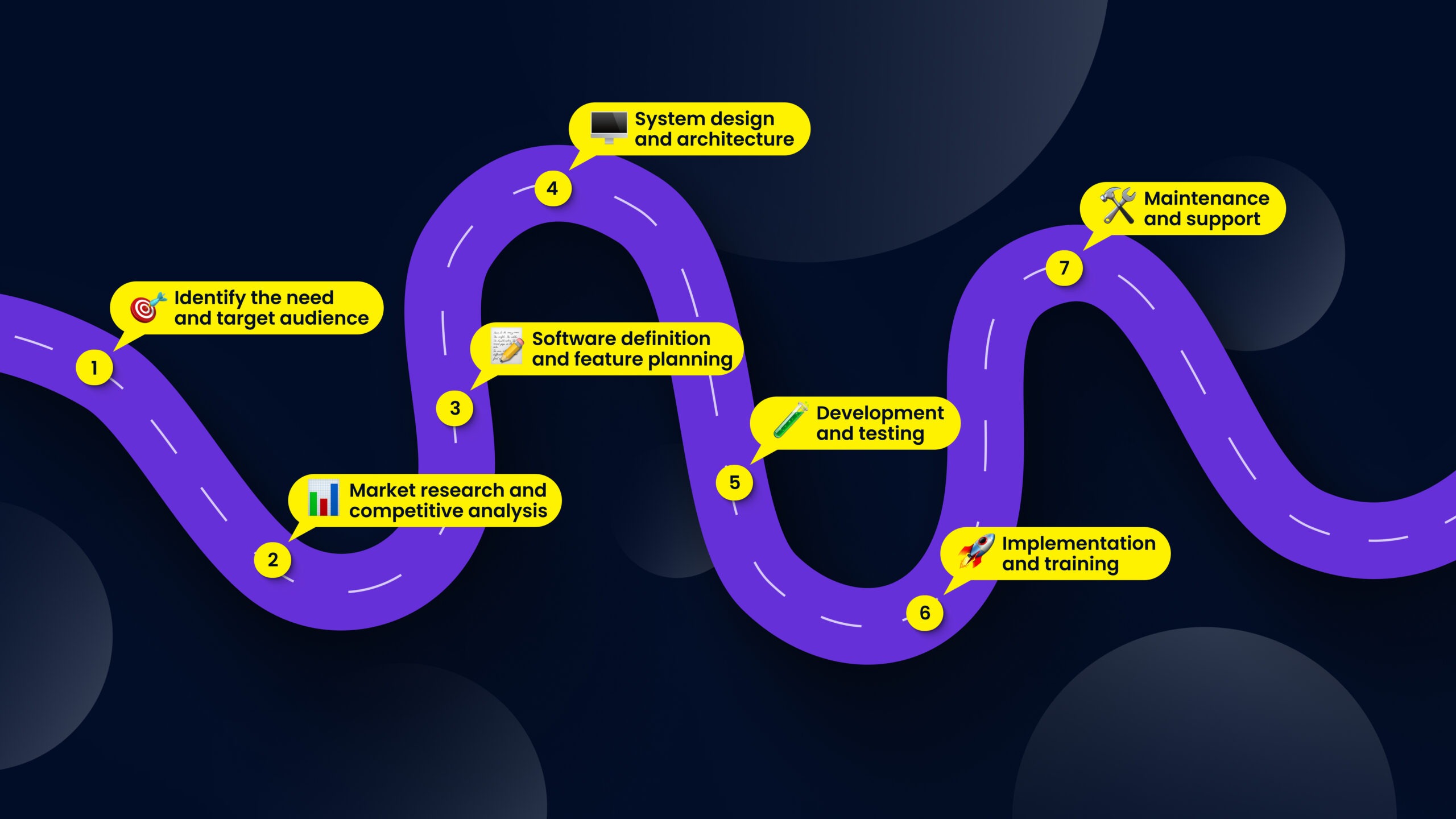
1. Identify the need and target audience
What specific problem are you trying to solve? Is it improving appointment scheduling, managing patient records, or automating tasks for a specific department?
Who will be using the software? Doctors, nurses, administrators, or patients? Understanding their needs and workflows is crucial.
2. Market research and competitive analysis
Research existing hospital software solutions to understand what features are already available and identify any gaps in the market. Analyze competitor strengths and weaknesses to identify opportunities for differentiation.
3. Software definition and feature planning
Developing a successful software solution starts by clearly defining its core functionalities and features. User needs and market demands should always be prioritized.
In 2024, a key trend is interoperability and data sharing. Fragmented healthcare systems often hinder seamless patient data exchange. This trend highlights the need for software that integrates seamlessly with existing systems, promoting secure data exchange and collaboration among different healthcare providers. By prioritizing interoperability, your software can directly address a pain point in the industry and deliver significant value to users.
4. System design and architecture
Choose a suitable software development methodology (e.g., Agile, Waterfall). Design the system architecture, considering scalability, security, and data management needs.
5. Development and testing
Select the appropriate programming languages and development tools. Build the software iteratively, with ongoing testing to ensure functionality and user experience.
6. Implementation and training
Develop training materials and resources for users. Implement the software in a controlled environment and migrate data if necessary.
7. Maintenance and support
Provide ongoing software updates, bug fixes, and technical support.
Specific medical software types and their key considerations
When creating appointment scheduling software, focus on user-friendly interfaces for both patients and staff. Integrate with calendar management systems and patient portals and ensure HIPAA compliance for data privacy.
For EHR software, prioritize robust data security and access control measures. Facilitate data sharing across different healthcare providers and ensure compliance with relevant medical record standards (e.g., HL7).
When developing hospital management information system (HMIS), integrate patient records, billing, inventory management, and other functions. Offer modular design for customization based on hospital needs and ensure scalability to handle large data volumes and user base.
The future of automation in hospitals
The future of hospital automation is brimming with possibilities, building upon the foundation of existing technologies. Let’s compare what we have now with what could possibly appear in ten years.
The now: Automation streamlining workflows
Hospitals are already embracing automation in various areas, using RPA, IoT, AI-supported EHR systems, automated lab equipment and AI-powered image analysis, wearable devices, and telehealth platforms. But what should we expect from the future?
The future: A more intelligent and personalized experience
The next decade will likely see significant transformations, with automation becoming more sophisticated and integrated.
- Cognitive automation. Advanced AI, beyond basic automation, will learn and adapt to hospital management workflows.
- Predictive maintenance. AI will anticipate potential equipment failures, minimizing downtime and ensuring smooth operations.
- Personalized medicine. Automation will support personalized care plans based on individual patient data and AI-powered insights.
- Robotic-assisted surgery. Advancements in robotics could lead to more minimally invasive surgeries with improved precision and faster recovery times.
- AI-powered diagnostics. AI will analyze medical images and data sets with greater accuracy, aiding in faster diagnosis and treatment plans.
- Virtual assistants and chatbots. AI-powered virtual assistants can assist both patients and staff, providing basic information, scheduling appointments, and answering routine questions, freeing up human resources.
How can staff augmentation help you with your medical startup?
Staff augmentation can be a game-changer for your hospital pharmacy software as it provides you with the specialized skills and expertise you need without the commitment of full-time hires. Here’s how it can benefit your medical startup in several key areas:
- Filling skill gaps. Medical startups may lack the internal expertise for specific tasks like regulatory compliance or data analysis. Staff augmentation helps you fill these gaps and move your projects forward.
- Scaling up for growth. Staff augmentation is a flexible solution to scale your workforce. You can add staff during product development or clinical trials and then scale back when those crucial phases are complete.
- Cost-effectiveness. Hiring in-house employees comes with overhead costs like benefits and payroll taxes. Staff augmentation eliminates these costs and optimizes your budget. You can also save up to 60% on direct labor costs by choosing staffing regions with lower salaries.
- Access to a global talent pool. For example, MWDN works globally, hiring in Eastern Europe, Israel, Western Europe, and the Americas. You can benefit from this pool and hire specialists that you can’t find locally, especially in niche areas like healthcare.
- Reduced time to hire. The traditional hiring process is time-consuming. Staff augmentation companies can quickly identify and connect you with pre-vetted candidates, accelerating your ability to start filling critical roles. It takes MWDN only 14 days to offer you a shortlist of candidates who best fit your requirements.
Content
- 1 Healthcare systems challenges in 2024
- 2 Areas of automation in hospitals
- 3 Technology implementation in hospitals
- 4 How will smart hospitals improve the consumer experience?
- 5 Benefits and challenges of hospital management automation
- 6 How to create different hospital software?
- 7 The future of automation in hospitals
- 8 How can staff augmentation help you with your medical startup?


